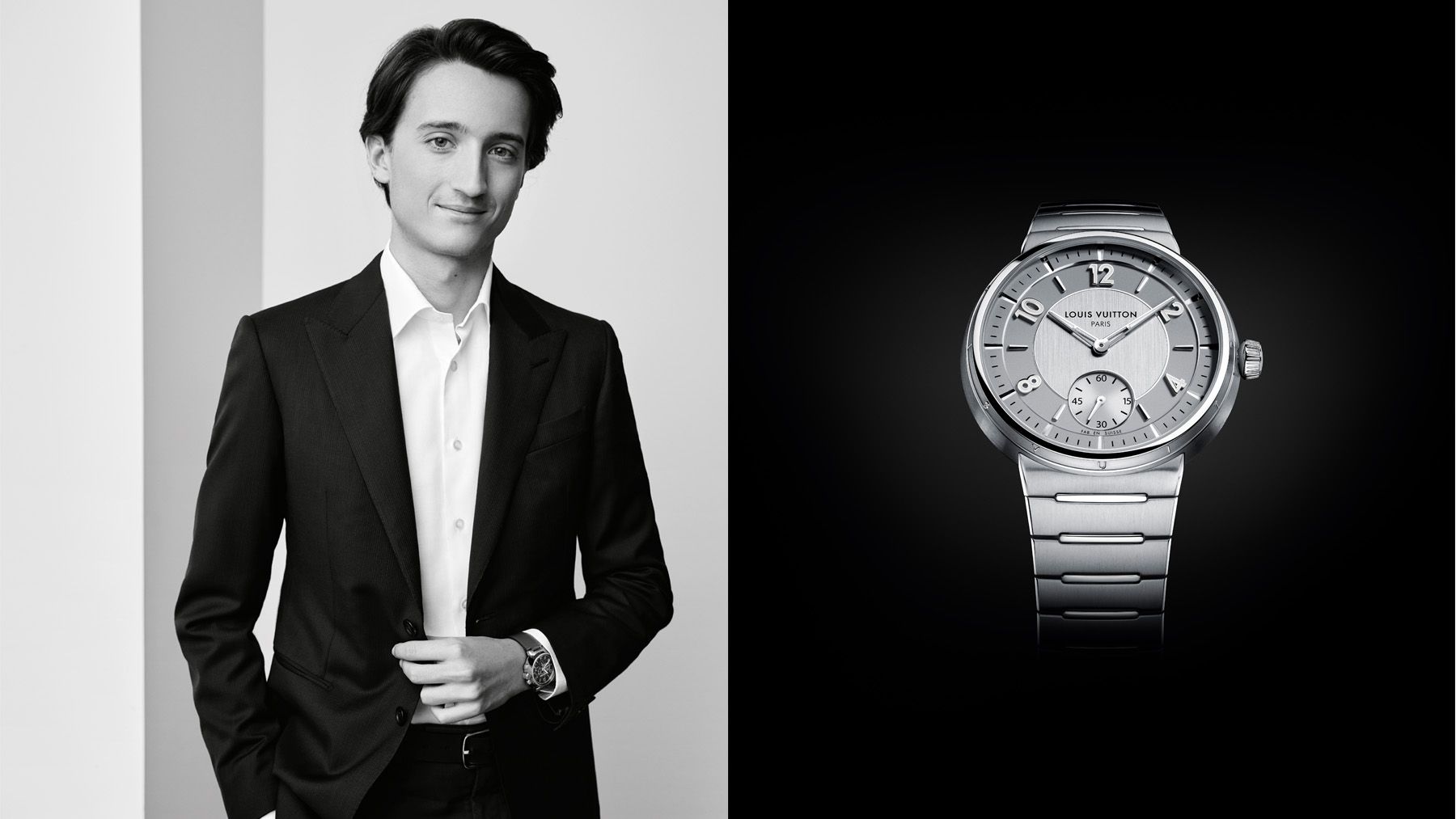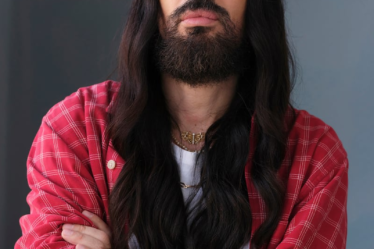
PARIS — Jean Arnault admitted he was rolling the dice. “It’s really a kind of a gamble,” the 24-year-old director of marketing and development for watches at Louis Vuitton told Business of Fashion in an exclusive interview. “This shift could either make our business drop quickly or revive it completely.”
The shift Arnault was referring to was the relaunch of Louis Vuitton’s flagship Tambour watch with a collection of five ultra-high-end variations on the style. Ahead of the new watches’ introduction at Paris’ Musée d’Orsay Wednesday, Arnault said the new line of mechanical sports timepieces was “made by watch collectors for watch collectors.”
The Tambour was originally launched two decades ago and is Louis Vuitton’s signature watch design. Now, under Arnault’s direction, the drum-shaped watch has been upgraded with an integrated metal bracelet, thinner case, new automatic mechanical movement — and much higher price points.
The new models are set to replace as much of 80 percent of the company’s regular watch collection, Arnault said, as the brand transitions to a top-end positioning in the category.
The launch also marked the first time Arnault — the youngest member of luxury’s wealthiest clan — had stepped into the spotlight after quietly joining Louis Vuitton in 2021. The Arnault family were among the attendees at a gala dinner in Paris last night to announce the new collection, alongside Bradley Cooper, Natalia Vodianova, Alicia Vikander and Michael Fassbender.
Even if the stakes were high — Louis Vuitton is luxury’s biggest brand and the profit driver of family-controlled parent company LVMH — Arnault said he was confident that a push upmarket was the right move. “It would be stupid for us not to enter that side of the business [and make] an integrated sports watch,” he said.
In recent years luxury sports watches with integrated bracelets (referring to designs where the metal band flows into the case), such as Audemars Piguet’s Royal Oak and Patek Philippe’s Nautilus, have dominated the high-end watch market. Rolex, whose collection is almost entirely made up of integrated sports watches, is understood to account for around 30 percent of sales of Swiss timepieces.
While previous generations of Louis Vuitton watches have been available for a few thousand dollars — roughly in line with rival luxury fashion brands’ watch extensions — the new pieces will start from $18,500 for steel versions and rise to $52,000 for full gold, putting the Tambour in direct competition with watchmaking’s top-end pure players.
Louis Vuitton was founded in 1854 but only presented its first watch in 1988, making it a comparative newcomer compared to legacy names such as IWC, Girard-Perregaux and Zenith, as well as jewellery-first maisons like Cartier and Chopard, all of whom have been making watches for more than a century.
Can the Tambour compete? “It takes time,” said Arnault. “I’m talking about 20 years. Obviously, we’re hoping for a smashing success, but we’re not expecting a smashing success to start because we’re going from one step to the next so quickly.”
Arnault insisted he had no fixed targets. “We’re not looking at the numbers,” he said. “We’re changing so radically that we haven’t put specific ambitions as to when or how or which targets we’re going to do.” Still, category expansion is seen as a key opportunity for Louis Vuitton as the brand seeks to keep growing after surpassing the threshold of €20 billion in annual sales last year.
The prices of the new collection took some observers by surprise. “Grossly overpriced for what it is,” said a commenter on the watch website Hodinkee in response to the launch. But Arnault was unrepentant. “Louis Vuitton is not here to put a watch on the wrist of everybody.”
Arnault said the new Tambour was about making the Louis Vuitton watch story more coherent. To date, its entry-level watch collection has had little in common with low-volume, high-end mechanical releases, such as the playful Tambour Spin Time or the highly inventive Carpe Diem, created by the brand’s Geneva watchmaking facility, La Fabrique du Temps.
“The brand is dichotomic,” he said. “It’s very bipolar. But from today, we no longer have two levels of finishing, two levels of craftsmanship and two levels of quality. Everything is now on the same plane.”
Louis Vuitton’s luxury smartwatch, the $3,405 Tambour Horizon Light Up, accounts for around 25 percent of the company’s watch volumes, but the gadgets are understood by consumers to belong to a separate product category.
Asked who might buy the new watches, Arnault paused. “That’s interesting,” he said. “I’m looking forward to seeing the results, which will probably be completely different in a year.” He said Louis Vuitton’s high-end pieces had a committed collector base, and that initially, he expected the same collectors to be interested in his new watches.
But he added: “I hope with all my soul that at some point we’ll be able to convert watch collectors and watch connoisseurs that would have gone for a pure-player brand, and to hear them say that Louis Vuitton has a compelling offer. I hope to turn some of those people around.”
Buyers have already proved willing to invest in expensive watches made by multi-disciplinary luxury maisons. Bulgari, Gucci, Chanel and Montblanc have all developed successful fine watchmaking businesses, while Hermès’ watch division trumped them all with a turnover of €519 million in 2022, according to its last annual financial report.
LVMH doesn’t break down the performance of individual brands, but according to Morgan Stanley estimates, Louis Vuitton’s watch revenues reached 130 million Swiss francs ($144 million) and volumes of 35,000 watches last year (around a quarter of Hermès).
Arnault said his new watches would only be available in Louis Vuitton stores, where there would always remain pieces to try on, even if some models were likely to run waiting lists.
Arnault is the fifth and youngest child of Bernard Arnault, the chairman and chief executive of the LVMH Group and the world’s richest man. Siblings Delphine, Antoine, Alexandre and Frédéric all hold senior positions in the family-controlled luxury empire, whose brands also include Dior, Tiffany, TAG Heuer and Berluti.
After studying engineering and finance, Jean said he had chosen to move into one of his father’s luxury watch businesses because he had “always been passionate about mechanical things.” He said he had initially wanted to work in the car business before being “called by the watch rabbit hole” as a teenager. His older brother Frédéric — chief executive of TAG Heuer since 2020 — is also a watch fanatic.
Arnault said that despite growing up in the age of the iPhone and the smartwatch, he and his fellow members of Gen-Z were intrigued by mechanical timepieces. “We know that they are eternal, or at least that they can last a lot longer than electronics,” he said.
Luxury watch production volumes have declined in recent years. Swiss watch exports fell from 28.1 million in 2015 to just 15.8 million last year.
Still, a handful of ultra-luxe brands like Audemars Piguet and Richard Mille have surged during the pandemic —offering hope for the industry’s topline.
Arnault said that was a reflection of changing tastes. “People buy less watches or higher quality watches that will last and stand the test of time,” he said.
And if Louis Vuitton’s Tambour answers that brief, Arnault’s top-table gamble might yet pay off.


